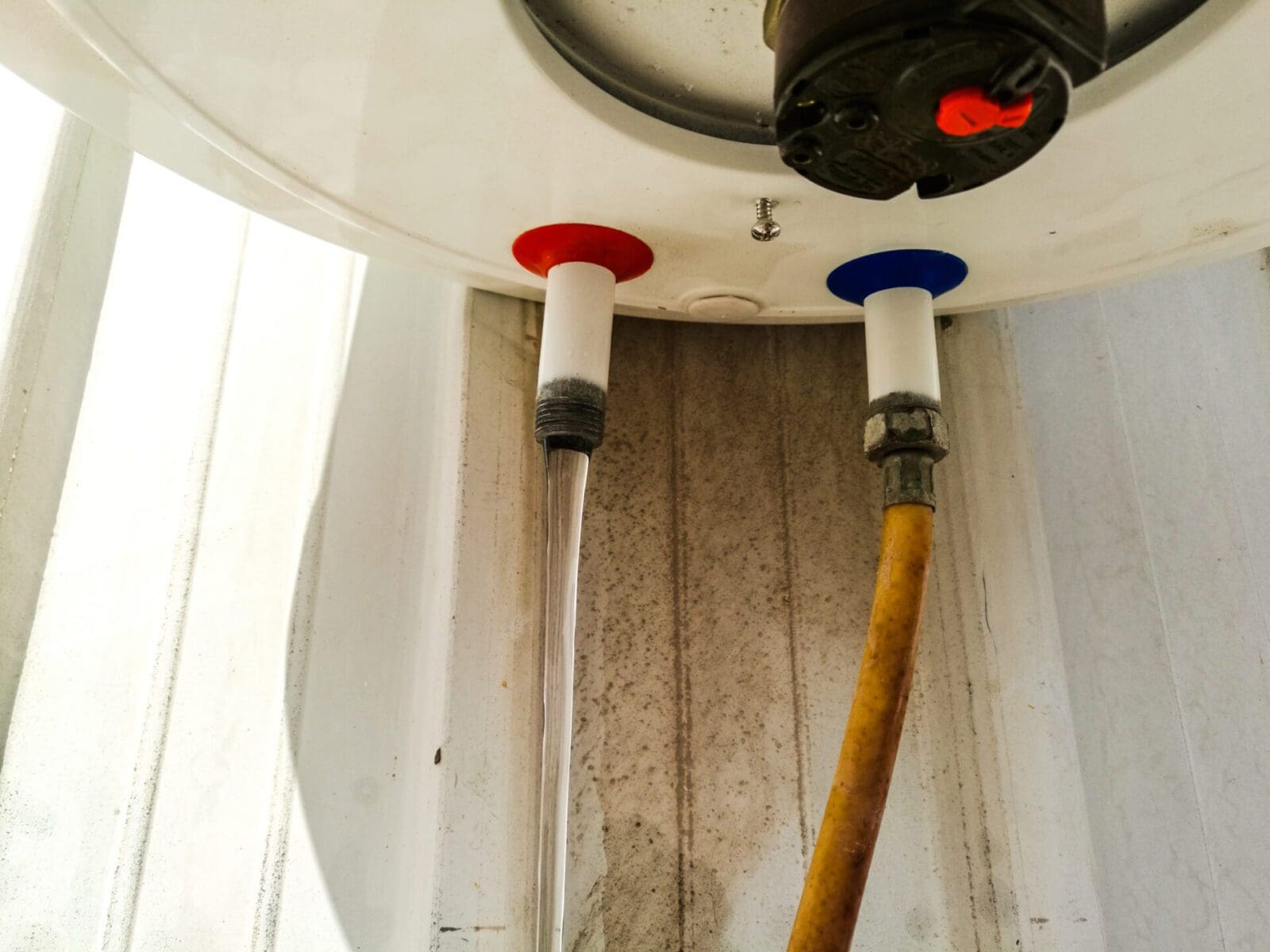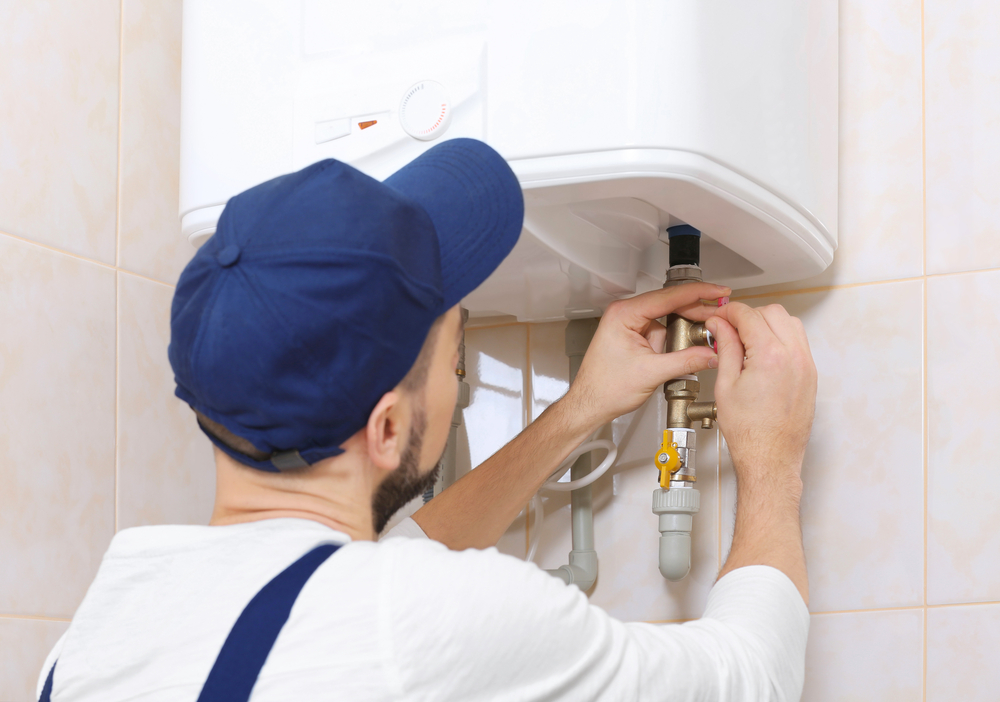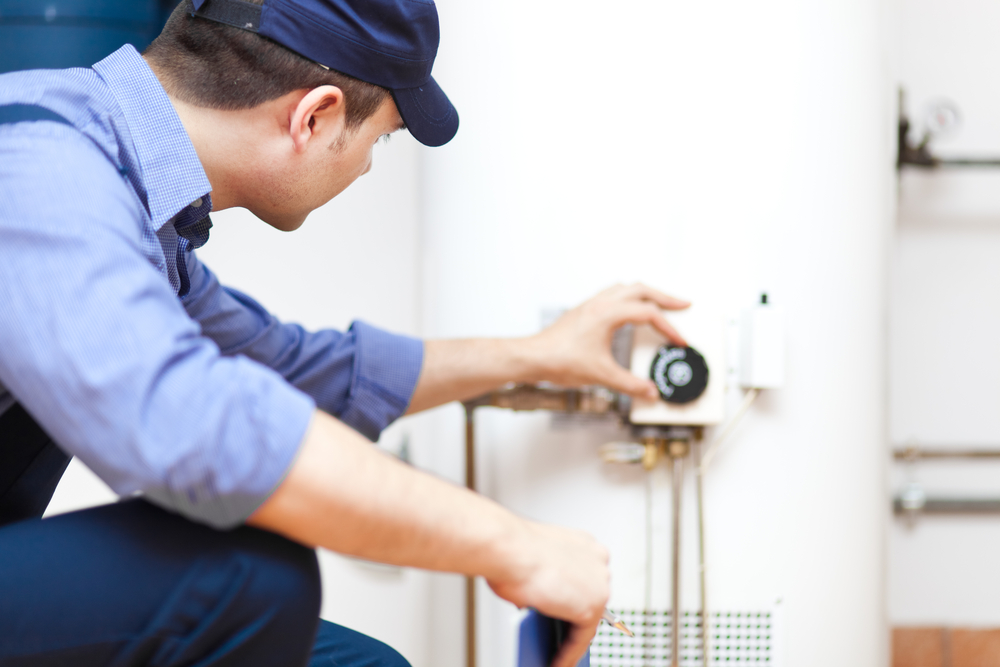
When you have a leaking water heater, the consequences can be severe. If you don’t take steps to fix it, it can cause significant damage. You want to fix a leaking water heater as fast as possible, but first you have to figure out the source of the leak. Once you do, it can save you time and money.
In Framington, Massachusetts, our plumbing team can handle this issue for you. Water heaters can be dangerous if they leak into specific areas, so taking any water heater leaks seriously is essential. If you’re wondering, “Why is my water heater leaking?” we have the answer. We’ll help you tell the difference between minor leaks and ones that require a unit replacement below.
What Are the Causes of a Leaking Water Heater?
In most homes, a water heater is an essential appliance because it gives you a reliable source of hot water for everyday use. But like any appliance, water heaters can develop issues. One of the most common problems homeowners encounter is a leaking water heater. These leaks can have several sources that range from everyday wear and tear to failing components. Knowing the cause of these leaks can help you diagnose and fix them. the leading causes include:
1. Old Tank
As your water heater ages, deterioration and corrosion are common problems. The constant cooling or heating cycles can put a strain on the tank, which can cause leaks or tiny cracks. If your water heater is more than a decade old, it might be time to replace it.
2. Loose Drain Valve
You use the drain valve to empty the tank when it comes time to perform routine maintenance or replace the water inside. If you don’t close it properly or it loosens, you may notice your water heater leaking. Making a point to regularly inspect the drain valve and ensure you close it tightly can prevent these leaks.
3. High Water Pressure
Manufacturers design water heaters to work within a specific pressure range. If your water pressure is too high, the tank and parts must work harder to contain it. Make a point to check your home’s water pressure settings, and consider installing a pressure-reducing valve.
4. Faulty T&P Valve
The T&P release valve—which stands for temperature and pressure—is a critical safety feature that releases extra pressure and prevents your water tank from exploding. If it wears out or breaks, it can start to leak. Scheduling regular inspections and water heater repairs can ensure your system works safely and efficiently.
5. Crack in the Water Heater
Manufacturing defects or physical damage can cause cracks to form in the tank. Over time, these cracks can expand and worsen due to the contraction and expansion that the heating cycles cause. Eventually, they can cause leaks, for which replacing the unit is typically the best solution.
6. Hard Water
If you live in an area with hard water, that means your water has a higher mineral content, primarily magnesium and calcium. These minerals can slowly build up in the bottom of your tank, forming a thick sediment layer. This sediment makes your water heater work harder, which can cause overheating and tank damage. Regularly flushing the tank will help reduce this buildup.
7. Inlet and Outlet Connections
If your water heater leaks, look at the inlet and outlet connections to see if they’re loose or corroded. Regularly inspecting and tightening these connections and replacing any rusty parts you find will reduce the risk of leaks.
8. Anode Rod
This is designed to attract any corrosive elements to help protect the tank from corrosion. However, the tank can rust and leak if this rod becomes too worn. Checking and replacing your unit’s anode rod can extend your water heater’s life and prevent expensive water damage.
 Where Do the Leaks Come From?
Where Do the Leaks Come From?
Water heaters can slowly develop issues over time, one of the biggest concerns being leakage. Where your water heater is leaking from will vary, and understanding the most common leaking points can improve the troubleshooting process. Most leaks originate from the following parts of the water heater.
Bottom Leaks
Water leaking from the bottom of the water heater unit is usually due to sediment buildup inside the tank. This sediment is generally caused by minerals in the water that settle at the base. Water gets trapped in the sediment and boils as the heat cycle runs, leading to “sediment sizzling.” This can cause small cracks and other damage to form, which decreases the unit’s efficiency. Regularly flushing your tank will reduce the sediment buildup.
Top Leaks
Leaking from the top of the water heater is usually due to outlet or inlet connections. These connections can corrode, loosen, or become compromised over time, allowing water to escape. The T&P valve is usually found here and can become faulty and release moisture. Make a point to regularly inspect and tighten these connections and ensure your T&P valve functions correctly to prevent top leaks.
Condensation
It’s common to mistake condensation for a leak. This is especially common when cold water enters the tank and interacts with the tank’s warmer outer surface, and condensation forms. This can also create a decent amount of moisture in areas with higher humidity levels. This isn’t an actual leak but can cause puddles to form around the water heater. Keeping the temperature consistent and ensuring you have good ventilation can help eliminate condensation.
Leaks Inside the Tank
Internal leaks are harder to pinpoint. They can result from corrosion, age, or a worn-out anode rod. The rod attracts corrosive elements to protect the tank. However, once it wears out, the tank is vulnerable to corrosion, which can cause internal leaking. If your water heater leaks here, it’s harder to spot without using specialized equipment, and it’s usually a sign that it’s time to replace your water heater.
Preventing Water Heater Leaks
If your water heater is leaking, it not only wastes a precious resource but can cause significant damage to your home. Fortunately, you can take several proactive measures and set up a regular maintenance schedule to help prevent or lower the risk of developing leaks. Here are a few ways to keep your water heater leak-free:
- Check the Water Heater Often – Inspect your water heater regularly to catch potential issues early. Look for signs of corrosion, rust, or water puddling around the base. If you notice drips or moisture, quickly find the source.
- Drain and Clean the Tank – Sediment buildup is a common cause of a leaking water heater. Drain and clean the tank once or twice a year to remove the sediment, which will improve efficiency and make it last longer. Always look at the manufacturer’s instructions or contact a professional for this project.
- Regular Maintenance – Having a professional maintain and repair your water heater annually will help extend its lifespan. They will spot issues that may be invisible to you, ensuring your system operates safely and efficiently.
- Tighten Loose Parts – Fittings and connectors can loosen due to regular wear and tear. Check the outlet, inlet connections, T&P, and drain valves, and tighten them.
 Water Heater Repair & Replacement Services
Water Heater Repair & Replacement Services
Dealing with a malfunctioning or leaking water heater can be frustrating and, in some cases, hazardous. Fortunately, the experienced plumbers at Nicholson offer top-tier repair and replacement services for all types of water heaters, ensuring that residents can enjoy a continuous hot water supply without the hassle.
Our expertise doesn’t stop there. Our skilled plumbers in Framingham also provide various other plumbing services, from fixing leaky faucets and clogged drains to comprehensive plumbing installations and maintenance. Choosing Nicholson means opting for quality, reliability, and a team that puts the customer’s needs first every time.

